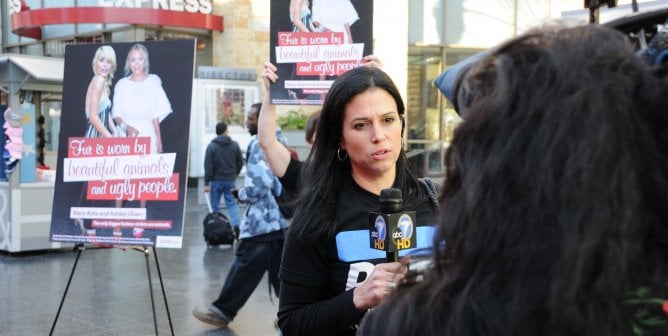New SeaWorld Exec Urged to Embrace Seaside Sanctuary Strategy
PETA Calls On Former Affinity Gaming Powerhouse Walter Bogumil to Save SeaWorld’s Sinking Ship by Ending Park’s Use of Animals
For Immediate Release:
June 18, 2018
Contact:
David Perle 202-483-7382
As Walter Bogumil takes over as chief strategy officer for SeaWorld, PETA sent him a letter today encouraging him to modernize the parks, end the use of animals, and move them to sanctuaries.
“As a former executive at Affinity Gaming, perhaps you’re a gambling man, and if so, I think you’ll see that relying on marine mammals for entertainment in the 21st century is a sure way to lose money fast,” writes PETA Executive Vice President Tracy Reiman. “People who care about orcas are going elsewhere, because there’s nothing entertaining about keeping animals in captivity.… SeaWorld can certainly adapt to changing public attitudes and become a place that kids will be happy to visit by moving the animals out and focusing on non-animal entertainment.”
In the letter, PETA—whose motto reads, in part, that “animals are not ours to use for entertainment”—points out the numerous ways in which SeaWorld’s tanks are hurting orcas, who, in nature, would swim as far as 140 miles a day. At SeaWorld, they are grouped incompatibly—the orca Katina’s dorsal fin was split open, a potentially life-threatening injury, during an interaction with her tankmates—and break their teeth by biting on the metal bars and concrete walls of their tanks. More than 40 orcas have died on SeaWorld’s watch.
For more information, please visit PETA.org.
PETA’s letter to SeaWorld Chief Strategy Officer Walter Bogumil follows.
June 18, 2018
Walter Bogumil
Chief Strategy Officer
SeaWorld Parks & Entertainment
Dear Mr. Bogumil,
I’m writing on behalf of People for the Ethical Treatment of Animals (PETA) and our more than 6.5 million members and supporters worldwide. As a former executive at Affinity Gaming, perhaps you’re a gambling man, and if so, I think you’ll see that relying on marine mammals for entertainment in the 21st century is a sure way to lose money fast. Perhaps you’re looking for a new challenge in this job. Well, you found one! With all due respect, we hope that challenge will be to push the company in a new direction—one that will save lives while rebounding earnings: modernizing the parks, ending the use of animals, and moving them to seaside sanctuaries.
You may know that free orcas are among the fastest animals in the sea—they can swim as far as 140 miles a day and dive as deeply as they please. On any given day in the wild, orcas can travel about half the length of the entire Grand Canyon—or more than the distance from Los Angeles to Tijuana, Mexico. At SeaWorld, they’d have to swim more than 4,340 lengths of their tanks to cover the distance that they might in the ocean.
Orcas are also intelligent predators who work cooperatively in search of food, have complex relationships in a matrilineal society, and, in some populations, rarely leave their mother’s pod. Food preferences, behavior, and dialect—communication lies at the core of orcas’ social awareness—are specific to each pod. But at SeaWorld, orcas are often taken away from their families and many are grouped incompatibly. Orca Katina’s dorsal fin was split open—a potentially life-threatening injury—during an interaction with incompatible members of her contrived “pod” at SeaWorld Orlando earlier this year.
Stress also manifests itself in broken teeth when they chew on the walls of their tanks, severe rake marks when they attack each other, and collapsed dorsal fins, which are rarely seen among free-roaming orcas. Stress can also be lethal: Tilikum, the subject of Blackfish, died of pneumonia, one of the most common killers of captive orcas, whose immune systems are weakened by chronic stress, deprivation, and tedium. Forty other orcas have died on SeaWorld’s watch, including Kyara, the last captive orca born at SeaWorld. She was 3 months old when she died last year.
I don’t have to tell you that SeaWorld lost more than $200 million and 1.2 million visitors last year. People who care about orcas are going elsewhere, because there’s nothing entertaining about keeping animals in captivity, and our campaign to ram that point home to people isn’t going away. Many parks and attractions are taking note. Others, such as Ringling Bros. and Barnum & Bailey Circus, which at first ignored the writing on the wall, paid for its refusal to change with the times and had to shut down completely. SeaWorld can certainly adapt to changing public attitudes and become a place that kids will be happy to visit by moving the animals out and focusing on non-animal entertainment.
Now is your chance to make a bet and win big, and we’re rooting for that to happen.
Sincerely,
Tracy Reiman
Executive Vice President


